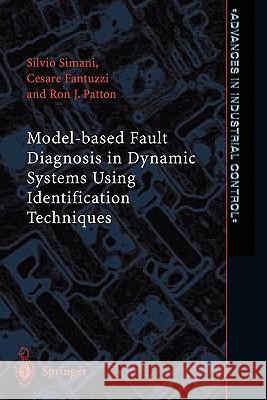Model-Based Fault Diagnosis in Dynamic Systems Using Identification Techniques » książka
Model-Based Fault Diagnosis in Dynamic Systems Using Identification Techniques
ISBN-13: 9781849968959 / Angielski / Miękka / 2010 / 282 str.
Model-Based Fault Diagnosis in Dynamic Systems Using Identification Techniques
ISBN-13: 9781849968959 / Angielski / Miękka / 2010 / 282 str.
(netto: 537,41 VAT: 5%)
Najniższa cena z 30 dni: 540,44
ok. 22 dni roboczych
Bez gwarancji dostawy przed świętami
Darmowa dostawa!
Safety in industrial process and production plants is a concern of rising importance, especially if people would be endangered by a catastrophic system failure. On the other hand, because the control devices which are now exploited to improve the overall performance of industrial processes include both sophisticated digital system design techniques and complex hardware (input-output sensors, actuators, components and processing units), there is an increased probability of failure. As a direct consequence of this, control systems must include automatic supervision of closed-loop operation to detect and isolate malfunctions as early as possible. One of the most promising methods for solving this problem is the "analytical redundancy" approach, in which residual signals are obtained. The basic idea consists of using an accurate model of the system to mimic the real process behaviour. If a fault occurs, the residual signal, i.e., the difference between real system and model behaviours, can be used to diagnose and isolate the malfunction. This book focuses on model identification oriented to the analytical approach of fault diagnosis and identification. The problem is treated in all its aspects covering: - choice of model structure; - parameter identification; - residual generation; - fault diagnosis and isolation. Sample case studies are used to demonstrate the application of these techniques. Model-based Fault Diagnosis in Dynamic Systems Using Identification Techniques will be of interest to researchers in control and fault identification. Industrial control engineers interested in applying the latest methods in fault diagnosis will benefit from the practical examples and case studies.











